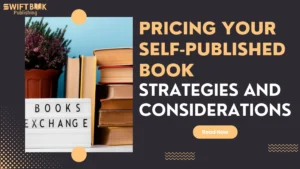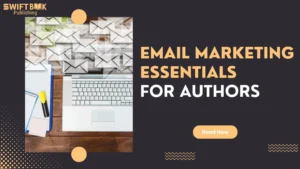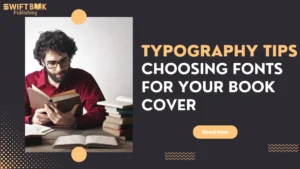If you’ve ever tried to write a query letter, you’ll know it feels a lot like trying to summarise your entire book, your personality, and your publishing dreams, in under 400 words. No pressure, right?
But here’s the truth: that tiny letter could be your ticket to a traditional publishing deal. Or, at the very least, a foot in the door. So whether you’re chasing an agent or sending your pitch to a publisher, nailing your query letter is a crucial step if you’re going the traditional route. And if you’re still on the fence about self-publishing vs traditional publishing, the query process might just help you decide.
Let’s walk through what makes a query letter persuasive, sharp, and professional, and how you can write one that stands out from the slush pile.
Why Query Letters Matter
Agents and publishers get hundreds, sometimes thousands, of submissions a year. Most don’t have time to read full manuscripts from everyone, which means your query letter is your one shot at making them pause, take interest, and ask for more.
It’s your pitch, your cover letter, and your personal sales pitch all rolled into one.
And no, a great book isn’t enough if your letter’s a mess. This is where solid book editing services come in handy. Many authors have their query letters professionally polished to make sure every sentence earns its keep.
Structure of a Strong Query Letter
When it comes to writing a query, structure is everything. No fluff, no filler. Just what they need to know, and nothing more.
1. The Hook
Start strong. One or two lines that give the agent a taste of your story. Think of this as your book’s elevator pitch. What makes it stand out? Why should they care?
It’s not the full plot here, just enough to spark interest.
2. The Synopsis
Now go into your book’s core. This is where you summarise your story (not your themes or writing journey) in about one paragraph. Mention the genre, word count, title, and the main conflict or journey. Keep it clean and compelling.
If you’re targeting a niche genre, make sure your book typography tips, tone, and structure match what’s expected in that space.
3. Your Credentials
Let the agent know why you are the person to write this book. Mention any relevant writing experience, awards, publication credits, or professional background. If you’re a debut author, that’s okay, focus on your passion and what inspired the book.
This is also a great place to mention if you’ve worked with a professional editor or cover designer, like through Swift’s book editing services.
4. Personalisation
If you’re querying a specific agent, mention why. Did they represent books you love? Do they specialise in your genre? Show them this isn’t a copy-paste job.
Tips That’ll Help You Get Noticed
Writing a query letter isn’t just about structure. It’s also about voice, tone, and attention to detail. Here’s what else you need to keep in mind:
- Keep it short and sharp. Stick to one page. Anything longer will likely be skipped.
- Use professional formatting. Simple font, single spacing, no wild headers. Remember those book typography tips? The same rules apply here.
- Proofread like a pro. Spelling mistakes? Automatic bin. If you’re not confident, consider copy editing vs proofreading support.
- Avoid clichés. Don’t start with “I’ve always dreamed of being a writer…” Just tell them about your book.
- Include the right contact info. Your name, email, and phone. If you’ve got a site or social media with a solid following, include that too, just make sure your author platform building is presentable.
When to Send, and What Happens Next
Once your letter’s ready, do your homework. Make a list of agents or publishers who accept your genre. If you’re writing nonfiction, you’ll also want to include details about your platform, credentials, and possibly a proposal. Nonfiction usually gets fact-checked heavily, so be sure to emphasise your research and credibility. It’s a smart tie-in to fact-checking nonfiction books.
Send the letter according to their submission guidelines (most ask for email). Don’t send the entire manuscript unless they ask for it. And be prepared to wait. Replies can take weeks or even months.
In the meantime, polish your book media kit, start drafting your virtual book launch ideas, and maybe even begin to prepare your manuscript for an audiobook, because you never know when things might move quickly.
What If You Don’t Get a Response?
It happens. A lot.
If you get a rejection, don’t panic. Sometimes it’s about timing. Sometimes it’s just not the right fit. Keep querying. Keep refining. Consider adjusting your pitch, tweaking your hook, or even hiring someone to take a fresh look, especially if you’ve sent out 10+ queries without a single request.
And hey, if you’ve exhausted your list and feel your book is still worth sharing with the world? You’ve got options. Many authors find success through self-publishing and then using book marketing services to launch their books properly.
In fact, you might even revisit your plan to price your self-published book, get a book promotional video, and link up with Goodreads for authors to start building buzz yourself.
Final Note
Knowing how to write a query letter is a must for anyone pursuing traditional publishing, but it’s also a great exercise in clarity, confidence, and understanding your book’s core appeal.
It forces you to answer big questions: Who is this book for? What makes it special? Why now?
And no matter where your publishing journey takes you, whether it’s querying agents, joining KDP Select vs wide distribution, or planning a book pre-orders strategy, having a strong pitch is always a win.
So take your time. Craft it carefully. And when in doubt? Get a second pair of eyes. After all, even the best query letter benefits from a good edit.







